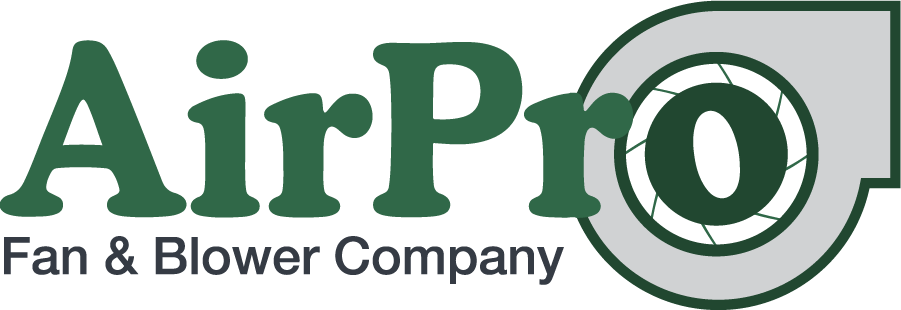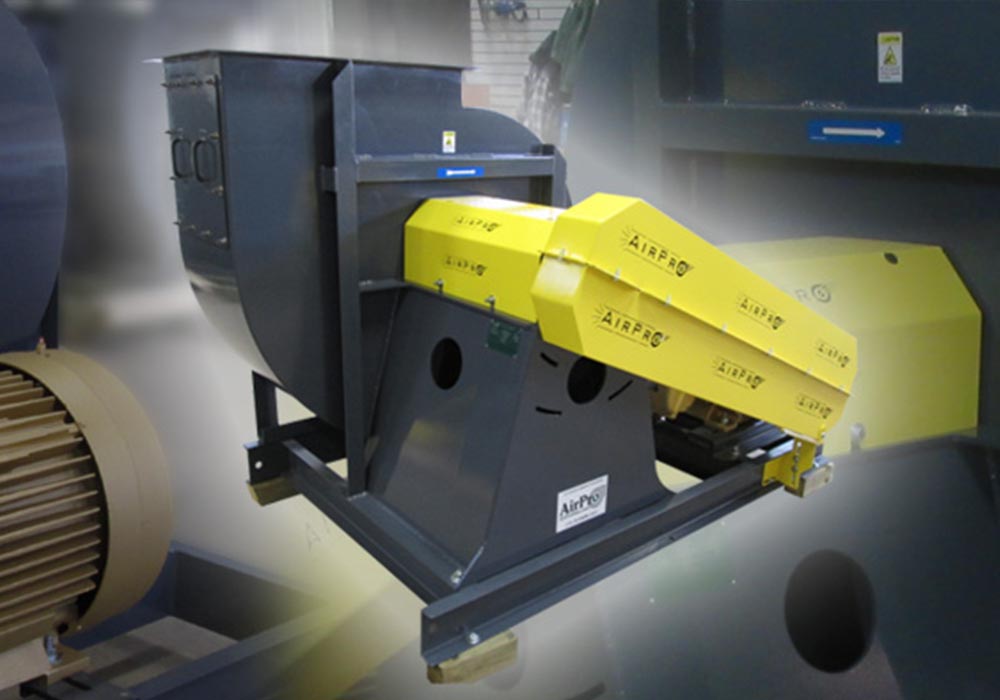Scrubber Fans
Centrifugal Fans for Industrial Scrubber Applications
Industrial scrubbers remove or neutralize toxic gases like carbon dioxide (CO2) and corrosive acids like ammonia (NH3), hydrochloric acid (HCI), sulfuric acid (H2SO4), nitric acid (HNO3), sodium chloride (NaCl) from a gas stream for air pollution control in industrial exhaust emissions (flue gas) to meet the standards and requirements of the Environmental Protection Agency’s Clean Air Act.
Wet scrubbers apply water and various reagents in mist form to remove the hazardous gases or particulates from the airstream. Dry scrubbers, also classified as dry sorbent injectors (DSIs) or spray dryer absorbers (SDAs), remove acidic gases from the airstreams created by combustion processes using a variety of alkaline materials and slurries.
The function of the centrifugal industrial fan in the scrubber system is to transport the contaminated air from the source and through the scrubber to clean and exhaust it. Because the air is acidic and corrosive, the fan needs to be constructed of corrosive resistant material, most commonly 304SS or 316SS, with proper sealing. It must also be extremely reliable and efficient because operations will stop without it. The scrubber application gases, pressure, and airflow will determine your process fan specifications.
Primary Industries for Industrial Scrubbers
Pollution control is required across many industries that produce Volatile Organic Compounds (VOCs) or Hazardous Air Pollutants (HAPs) as byproducts of their operations. Common industries that employ Scrubbers for pollution control include:
- Agricultural Processing
- Food Processing
- Glass Manufacturing
- Marine & Maritime Transportation
- Metals & Mining
- Oil & Gas
- Pulp & Paper
- Wastewater Treatment
Industrial Scrubber Fan Technology Selection & Specification
Because of the EPA emission requirements, the industrial scrubber is a core function of many industrial operations. Therefore, it’s critical to specify and select the correct fan, features and design.
The function of the industrial scrubber fan is straightforward – get the gas through the system safely and in compliance with regulations. In addition to exhausting the gas appropriately, it also means keeping the system gas-tight until the airstream is clean enough to exit into the atmosphere. There are also a number of fan options and a few very important design requirements to keep in mind.
The most common fan for industrial scrubber applications is the Industrial Exhauster with a radial blade impeller design. Thanks to its extremely robust and high-quality construction, it’s both cost-efficient and reliable. Other top-notch and more efficient options include our Backward Inclined and Backward Curved models.
Fan Designs Commonly Used on Scrubbers
- Industrial Exhauster Paddle Wheel (IEPW / IEFB)
- Backward Curved (BCHS)
- Backward Inclined (BIHS)
Fan Arrangements
Fan Arrangements indicate how the motors mount to and drive the fans. Industrial scrubbers can use both direct drive and belt drive options. In fact, any arrangement other than Arrangement 4 can work depending on how the application is situated. The top two Arrangements for scrubbers are:
Arrangement 8 - Direct Drive with an overhung impeller. The fan shaft is directly coupled to the motor shaft with a flexible coupling
Arrangement 9 - Belt Drive with an overhung impeller. The motor mounts to the side of the fan pedestal rather than a unitary base to save space.
Fan Accessories & Design
When it comes to design and accessories, it’s all about protecting and optimizing operations, maintenance, and life of the fan and bearings. In industrial scrubber applications, we often recommend:
- Non-Ferrous Components in the toxic airstream, like 316 Stainless Steel or Monel (a nonferrous, spark-resistant metal best-suited for acidic airstreams).
- Spark Resistance as some gas can be flammable
- Leak-Tight Construction with upgraded shaft seal, gaskets, and welding in the airstream and exterior to ensure that the VOCs/HAPs get all the way through the scrubber without escaping into the plant or the atmosphere
- Leak-Tight Testing prior to shipment
- EPDM Rubber Expansion Joints (ethylene propylene diene monomer – a synthetic rubber that is highly durable and flexible) for inlet and outlet
- Bearing vibration and temperature sensors to monitor bearing and fan health and prevent unplanned outages
- Final trim balance to a maximum not to exceed 0.124 in/sec filter-in at full operating speed. That means it’s a fan with lower vibration, which increases the life of the fan and fan bearings.
- Proper installation and maintenanceto ensure safe startup and operations
Featured Products
Case Studies
Talk with Our Application Engineers
If you feel overwhelmed by all this information, don’t despair! We have a team of application engineers who are happy to talk with you and select the best fan for your application. You can call 715-365-3267, email [email protected], or send us your information, and one of our engineers will connect with you.
Contact UsAirPro Fan & Blower
Connect With Us
Not finding what you need? Contact us








